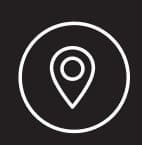Pop-up retail concepts are arriving in Phoenix—and the trend says a lot both about the evolution of Phoenix and the pop-up trend. Pop-up shops have become popular and even accepted by retail owners and lenders in primary markets like Los Angeles and San Francisco, but this is early trend in a secondary market, like Phoenix. The Phoenix market has experienced significant population growth, particularly inward migration from California, this trend is another milestone in the evolution of the market.
“We are seeing this start to take place in Arizona. During spring and fall, Arizona sees a lot of visitors, and pop-ups can take advantage of that,” Trenton McCullough, SVP at Levrose Commercial Real Estate, tells GlobeSt.com. “It is also an opportunity for landlords to fill vacant spaces. It is beneficial for landlords because it allows them to bring in new traffic, and it brings more of an experience for consumers. I think that we are going to see more of it, and I think it will be longer lasting.”
In Phoenix, baseball spring training has become a particularly hot time for pop-up shops selling teaming jerseys. “For spring training, jersey stores will pop-up in vacant suites to backfill spaces temporarily,” adds Mark Cassell, an advisor for retail investment sales at Levrose Commercial Real Estate, tells GlobeSt.com.
The concept and benefits of pop-up shops in Phoenix are the same as in larger markets. Pop-ups can drive new foot-traffic to retail centers, fill vacancies and allow retailers to test the market. “Consumers want to have more or an experience in retail, and you are seeing social media influencers drive that as well,” says Cassell. “That trend is driving pop-up shops in core urban areas where consumers can have a access to products that will only be available for a limited time.”
Lease terms in Phoenix have been an average of three-to-four months—shorter than the year that some pop-ups have established in Los Angeles—and they are concentrated in popular shopping hubs. “Pop-up retailers are looking at areas with high-foot traffic and walkability. That is going to be Downtown Tempe near Arizona State University and Tempe Town Lake; Old Town Scottsdale and North Scottsdale; and Downtown Phoenix, which is really starting to see a huge resurgence that they haven’t seen since the 50s when it comes to walkability,” says Cassell. “It reminds me a lot of what Downtown L.A. was like 15 or 20 years ago.”
Scottsdale specifically has been a hotspot for pop-ups. The market is already home to high-end retailers, and it has been growing. “Our biggest trade area is Scottsdale, which is where all of our shopping malls are and where our higher-end retailers are, and this is where we are starting to see more e-commerce go,” says McCullough. “That is a market where I think we can expect to see more pop-ups.”
While pop-ups are gaining popularity in the market, the concept is still new to investors and capital sources, and it could take time to adjust. However, McCullough says that the transition is coming. “A traditional owner wants stability. You are going to see that weed out traditional investors, but there is a buyer for everything,” he explains. “With the way the retail is changing, if there is an answer to fill a void or backfill a vacant space, I think that you will see lenders and investors transition to accept the idea. Right now, short-term leases are not a hot-ticket item for buyers.”
Source: GlobeSt





